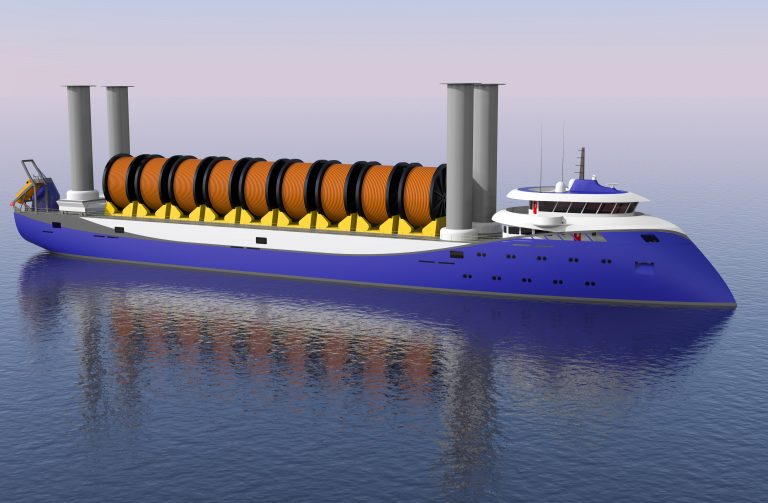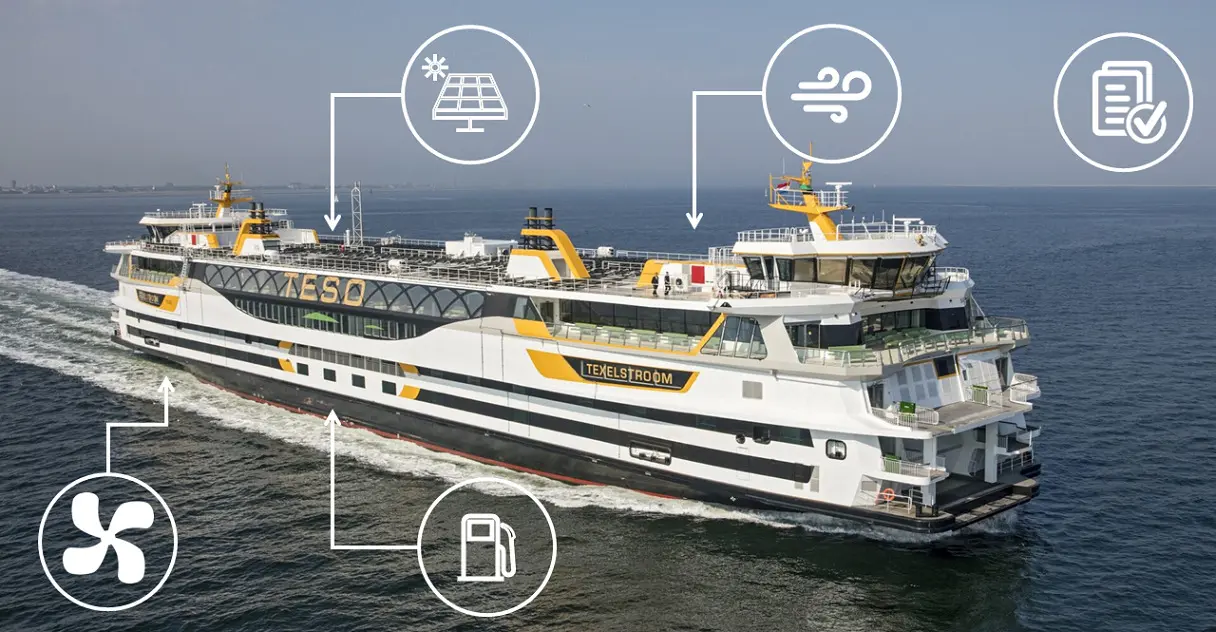Wind-assisted propulsion
Wind-assisted propulsion on ships can be an effective way to reduce fuel consumption and emissions. Numerous methods are available, including Flettner rotors – tall, rotating cylinders mounted on a ship’s deck – and ventifoils, which are fixed airfoil-shaped propulsion units
C-Job provides independent advice on wind-assisted propulsion and has practical experience of its implementation. For example, we developed a 5,000 DWT cargo ship concept design with four Flettner rotors. This saves up to 18% fuel on average compared to similar, conventional cargo vessels. A wide array of factors create an optimized design, including size of rotors (versus cost), vessel size, sailing speed, route, and deck space.
C-Job has also developed a performance prediction program to both calculate fuel savings for a proposed vessel, and optimize wind-assisted propulsion in existing, new build ships or retrofit vessels. This is an excellent tool for shipowners who want to calculate fuels savings, and even optimize sailing routes.
Discover more


5000 DWT Flettner Freighter
More about C-Job
Our R&D work has contributed to a ripple effect, as the impact of our vessel designs and technical solutions continues to spread. Discover how we are empowering clients to build better ships, as we propel the maritime industry towards a more sustainable future.
